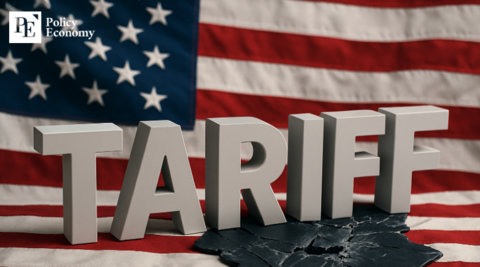Layoffs in Fed Government Begins as Trump Moves to Shrink Federal Workforce
Input
Changed
The Trump administration's mass layoffs of federal workers, particularly probationary employees, have created widespread confusion, anger, and legal challenges across the country. These firings, carried out as part of an aggressive effort to shrink the federal government, have affected agencies ranging from the Federal Aviation Administration (FAA), Food and Drug Administration (FDA), Centers for Disease Control and Prevention (CDC), Veterans Affairs (VA), Centers for Disease Control and Prevention (CDC), Department of Energy (DOE), and the Department of Agriculture (USDA) to various smaller government offices. However, the implementation has been chaotic, inconsistent, and potentially illegal, leading to backlash from both federal employees and lawmakers. The administration is targeting probationary staff, who have been in their roles for less than a year and lack job protection protections.
In the FAA, hundreds of probationary personnel were sacked shortly after a tragic aviation accident, raising worries about air traffic controller shortages and aviation safety. Health Agencies (FDA, NIH, CDC): Over 5,200 personnel were sacked, including CDC “disease detectors” and FDA officials managing AI regulation in healthcare.
Under the Department of Energy, it rehired some nuclear security workers, but fired 2,000 probationary staff.
Whereas in the Department of Education, dozens of workers, including those in the student aid and special education offices, were let go. To save more than $98 million a year, the Department of Veterans Affairs laid off 1,000 employees. In the U.S. Forest Service, 3,400 workers were let go.
Over 100 real estate management layoffs were announced by the General Services Administration. Trump has dismissed top FEMA officials, senior FBI agents, and inspectors general including Linda Fagan, the head of the U.S. Coast Guard, and more than a dozen federal prosecutors who worked on Trump-related cases were fired.
There have been lawsuits claiming that firing inspectors general and other independent agency officials was against federal law. The layoffs have drawn criticism even from some Republican lawmakers, such as Senators Lisa Murkowski (R-AK) and Bill Cassidy (R-LA), who have warned that they could jeopardize vital government operations.
Experts are especially concerned about the FDA's layoffs because they include AI regulatory personnel and food safety inspectors. CDC and NIH budget cuts may make it more difficult to monitor disease outbreaks. Only a few weeks after a mid-air collision, FAA job cuts raise questions about aviation safety.
With the reintroduction of Schedule F by Trump's executive order, the administration can now more easily fire federal employees by reclassifying them as at-will workers.
With the exception of the Department of Defense and Homeland Security, Trump has proposed budget cuts of 30–40% across the majority of federal agencies.
As the Trump administration works to reduce the size of the federal workforce, more layoffs and budget cuts are anticipated. Some terminations, especially high-profile ones, may be postponed or reversed due to legal challenges. There are still worries about the impact on vital services like disease prevention, food safety, and aviation regulation.
Trump's cost-cutting strategy is being criticized for its sloppy execution and possible long-term effects on public safety and government efficiency, despite its appeal to fiscal conservatives.
Unclear and Erratic Execution
Many employees who had already accepted voluntary buyouts—which were supposed to keep them on payroll until September 30—received termination notices anyway, raising questions about administrative oversight. The Office of Personnel Management (OPM) admitted that some layoffs were issued in error, further fueling confusion. Some workers received multiple conflicting notices regarding their employment status.
Nationwide Impact and Worker Reactions
The layoffs are affecting federal workers in every state, not just in Washington, D.C. Employees in Michigan, Florida, and Kansas—many working in crucial fields like veteran services, environmental conservation, and public health—are reeling from abrupt terminations. Andrew Lennox, a Marine veteran, was unexpectedly fired from the VA Medical Center in Michigan, despite being in a supervisory training program. David Rice, a disabled Army paratrooper working on radiation exposure issues at the Department of Energy, was fired while preparing for an international meeting. Nicholas Detter, a Natural Resource Specialist in Kansas helping farmers manage soil erosion, was laid off despite receiving only positive performance reviews.
Political and Legal Backlash
Sen. Lisa Murkowski (R-AK) criticized the layoffs, calling them “indiscriminate workforce cuts” that won’t fix the federal budget. Similarly, the National Treasury Employees Union (NTEU), along with other unions, has filed a lawsuit challenging the firings, arguing they violate federal personnel laws. The advocacy group Democracy Forward has also requested an investigation into whether these mass layoffs violate federal personnel policies. Some employees are worried that contractors and non-probationary workers will be next in Trump’s broader government downsizing plan.
Economic and Bureaucratic Consequences
Layoffs at the CDC and FDA could slow down public health response efforts and food safety inspections. Firing education department staffers may delay student loan services and special education support. Meanwhile, cuts at the VA included researchers working on cancer treatment, opioid addiction, and burn pit exposure, raising concerns about veterans' healthcare.
Despite the effort to cut costs, the layoffs are unlikely to significantly reduce the federal budget deficit, since federal employee salaries make up only a small fraction of government spending. The job market could suffer, as federal jobs cuts ripple into contractors, vendors, and grant-funded organizations.
Bigger Picture: Trump’s Government Downsizing Strategy
Led by Elon Musk and the Department of Government Efficiency (DOGE), the administration’s plan aims to shrink the federal workforce by 30-40%. Trump’s executive order requires agency heads to plan “large-scale reductions” after voluntary buyouts didn’t meet expectations. The administration is expected to expand Schedule F, reclassifying tens of thousands of federal employees as at-will workers to make future terminations even easier. Agencies like the Department of Defense and Homeland Security are exempt from budget cuts, while others like USAID and Diversity, Equity, and Inclusion (DEI) programs face elimination.
What’s Next?
More layoffs could come as agencies continue issuing termination notices until Tuesday’s deadline. Legal challenges could delay or reverse some firings, particularly those that violate procedural requirements. The public may start to feel the effects as agencies struggle with fewer workers in areas like public safety, healthcare, and environmental protection.
Economists warn that job growth could slow or turn negative due to federal job losses spilling into the private sector. Trump’s “slash and burn” approach to cutting the federal workforce has sown chaos and uncertainty across the country, with both legal and economic consequences still unfolding.





















